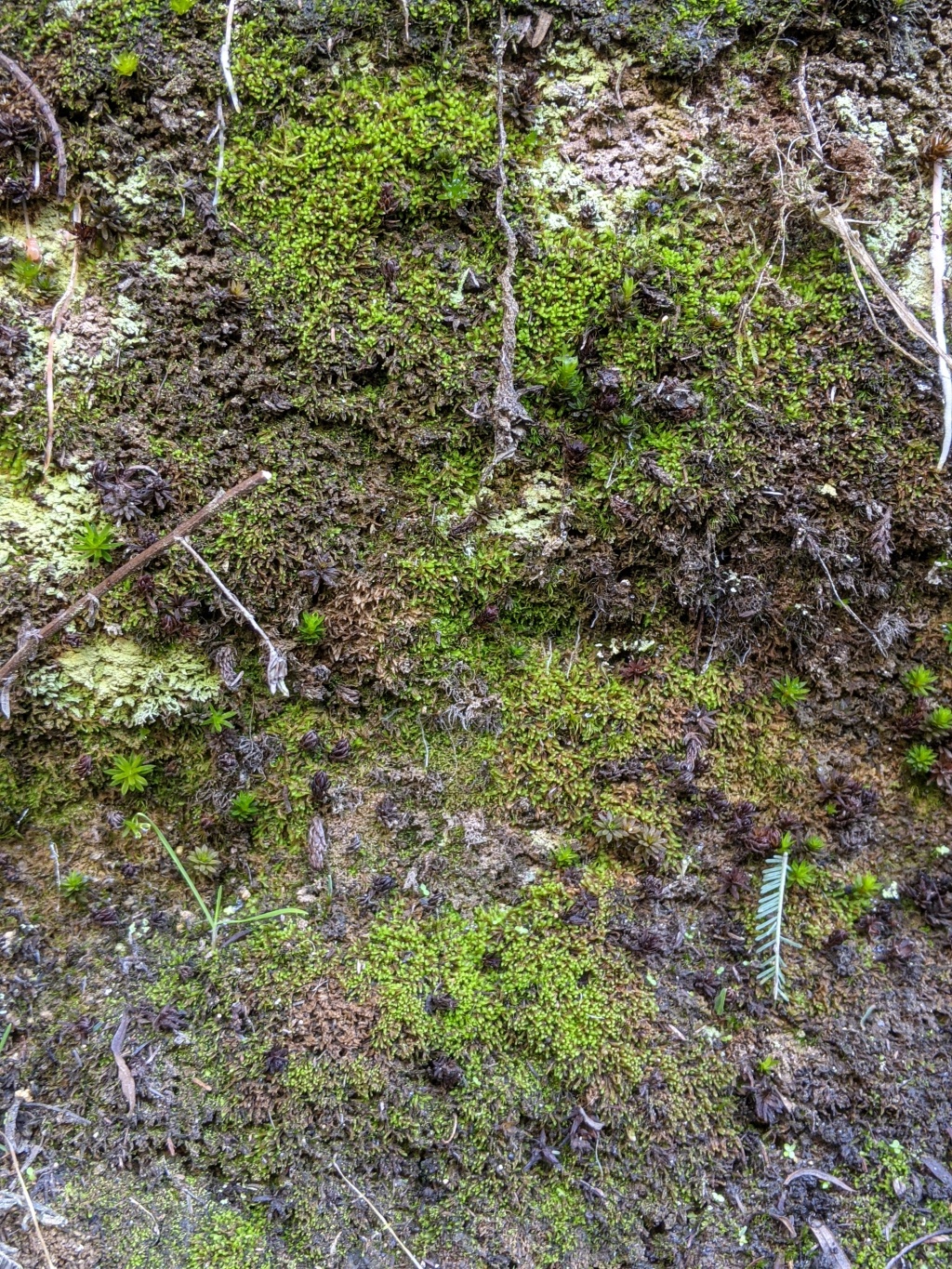Jackiellaceae
Terrestrial, dioicous. Asexual reproduction by ovoid to ellipsoid gemmae formed on margins of leaves near shoot apices. Stems prostrate to erect, sparingly branched, with two ranks of lateral leaves, without distinct underleaves; branches emerging from abaxial side of main stem and with an unlobed collar of tissue at base. Lateral leaves transverse to succubous, alternate, ovate, cordate or oblong, the two rows often facing each other over the adaxial surface of the stem, unlobed, entire, obtuse to retuse at apex. Underleaves if present, obscure, few near stem apex, reduced to a cushion of cells or a pair of few-celled cilia (not in Victoria) when present. Rhizoids in fascicles, arising from underleaf base or equivalent position if underleaf absent and on marsupium, without peg-like internal thickening, hyaline. Leaf cells polygonal, smooth, thin- to thick-walled with prominent trigones, with 1–3 large oil bodies; oil bodies usually ovoid to ellipsoid, sometimes spherical, granular, brownish. Androecia on short abaxial branches arising from main stem between vegetative branches, with up to 26 pairs of ventricose bracts each enclosing a single antheridium. Sporophyte enclosed by a solid pendent cylindric or falcate marsupium arising on abaxial side of main stem and becoming subterranean; perianth absent. Capsule ellipsoid to cylindric, bistratose, dehiscing by 2 bifid valves; elaters present, bispiral. Spores globose, papillate to smooth, yellowish-brown, shed singly.
One genus and seven species shared between Sri Lanka, India, Yunnan, Southeast Asia, Japan, Malesia, New Caledonia, Tahiti, New Zealand and eastern Australia (Grolle 1970); one species, Jackiella curvata, in Victoria.
Grolle, R. (1970). Eine neue Jackiella aus Tasmanien. Journal of the Hattori Botanical Laboratory 33: 222–224.
 Spinning
Spinning